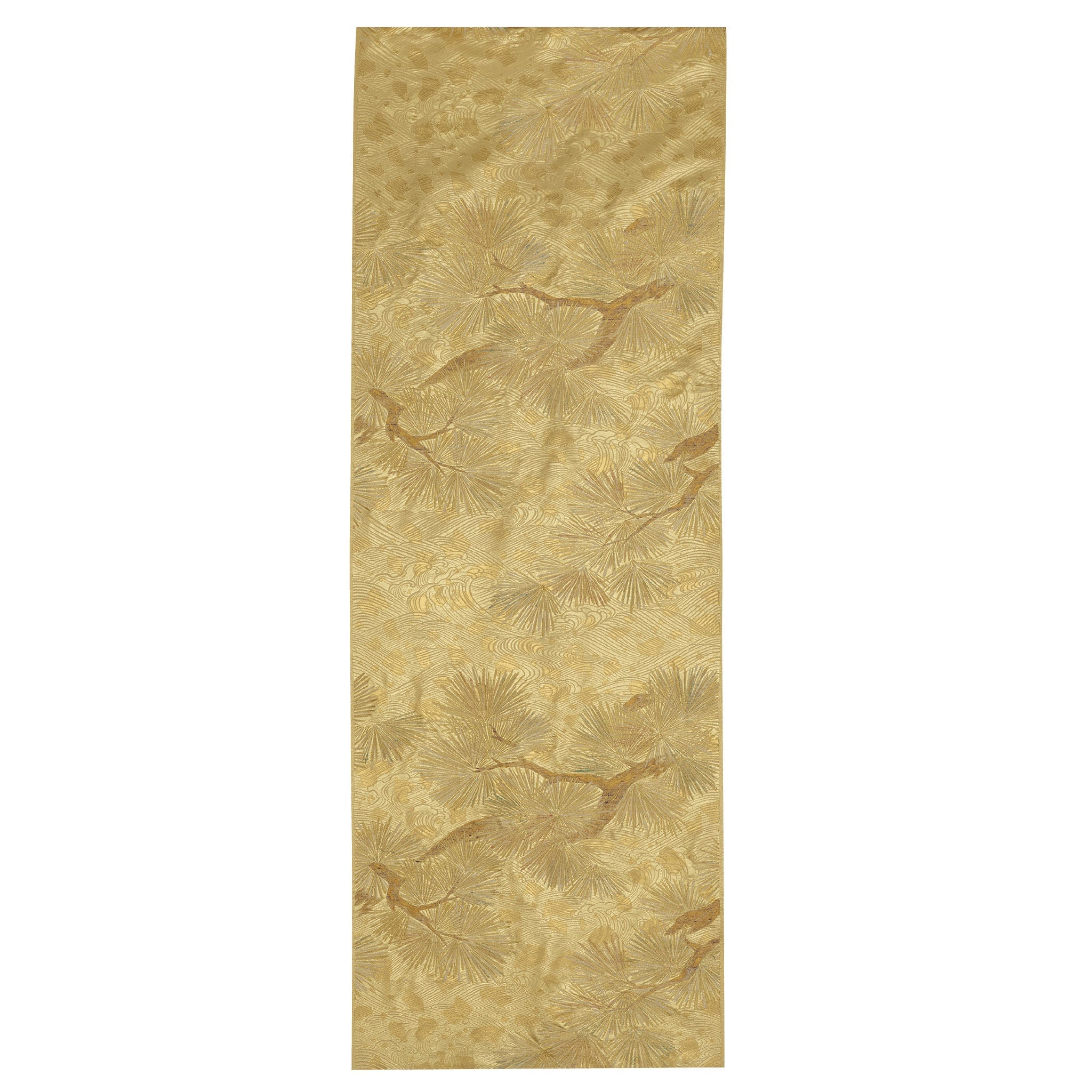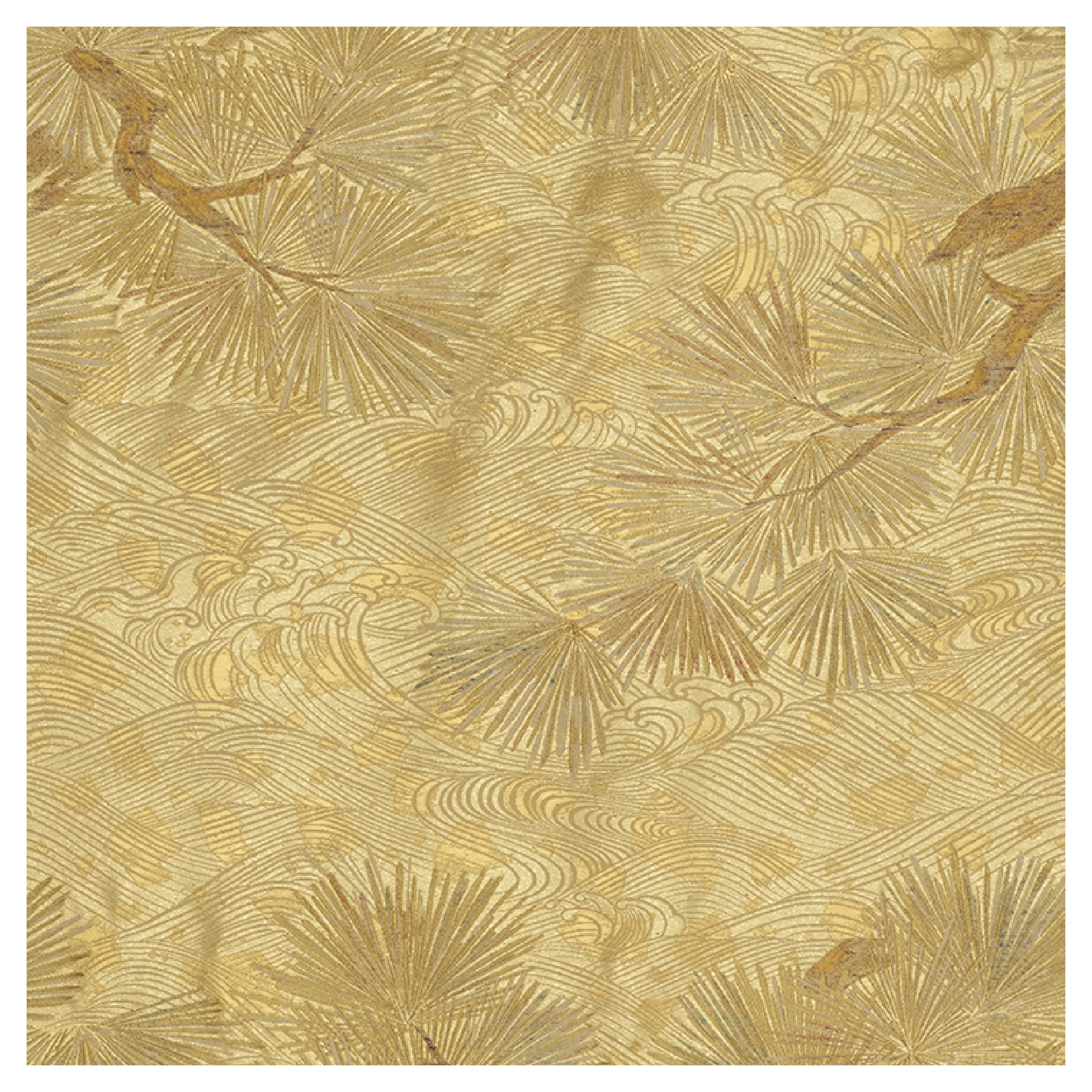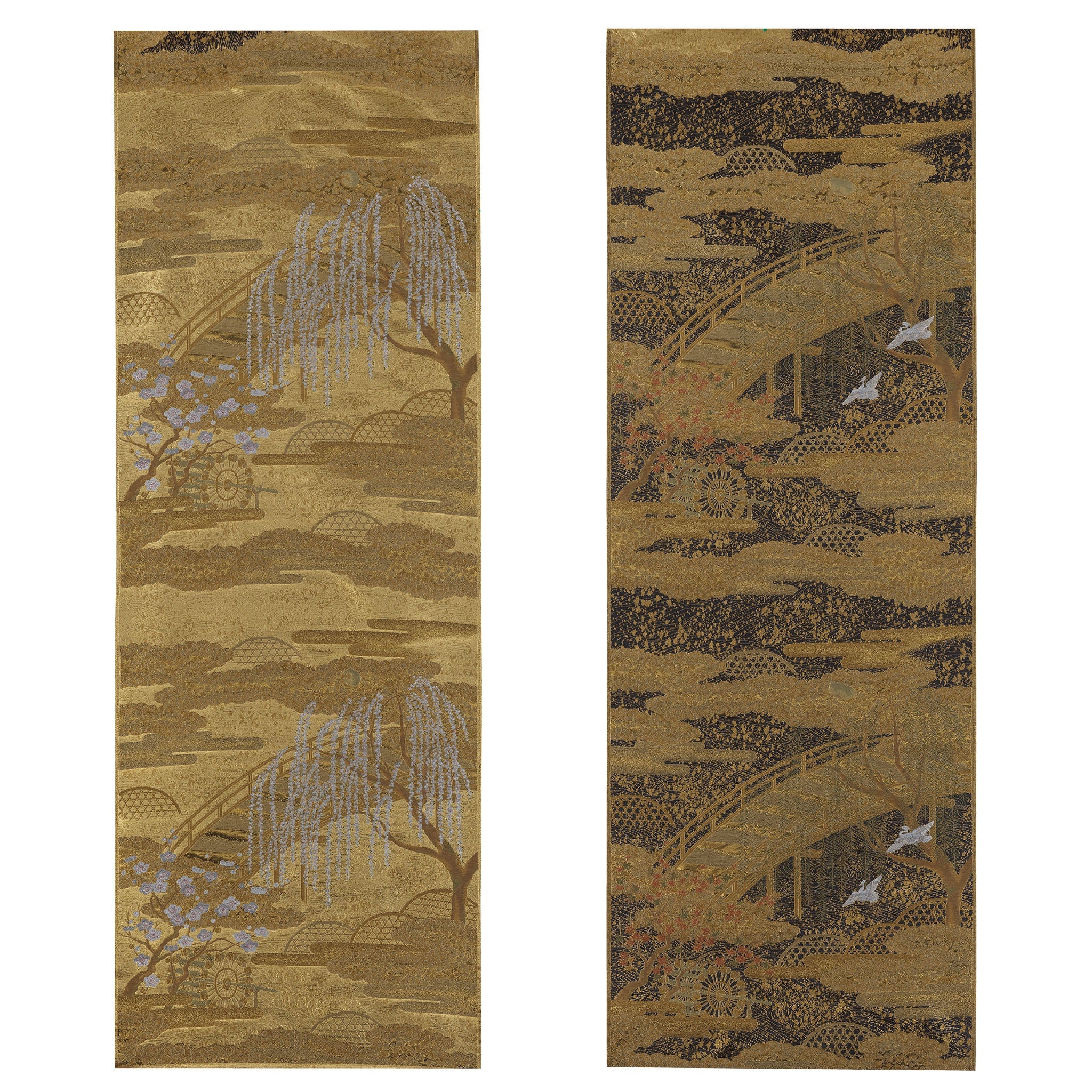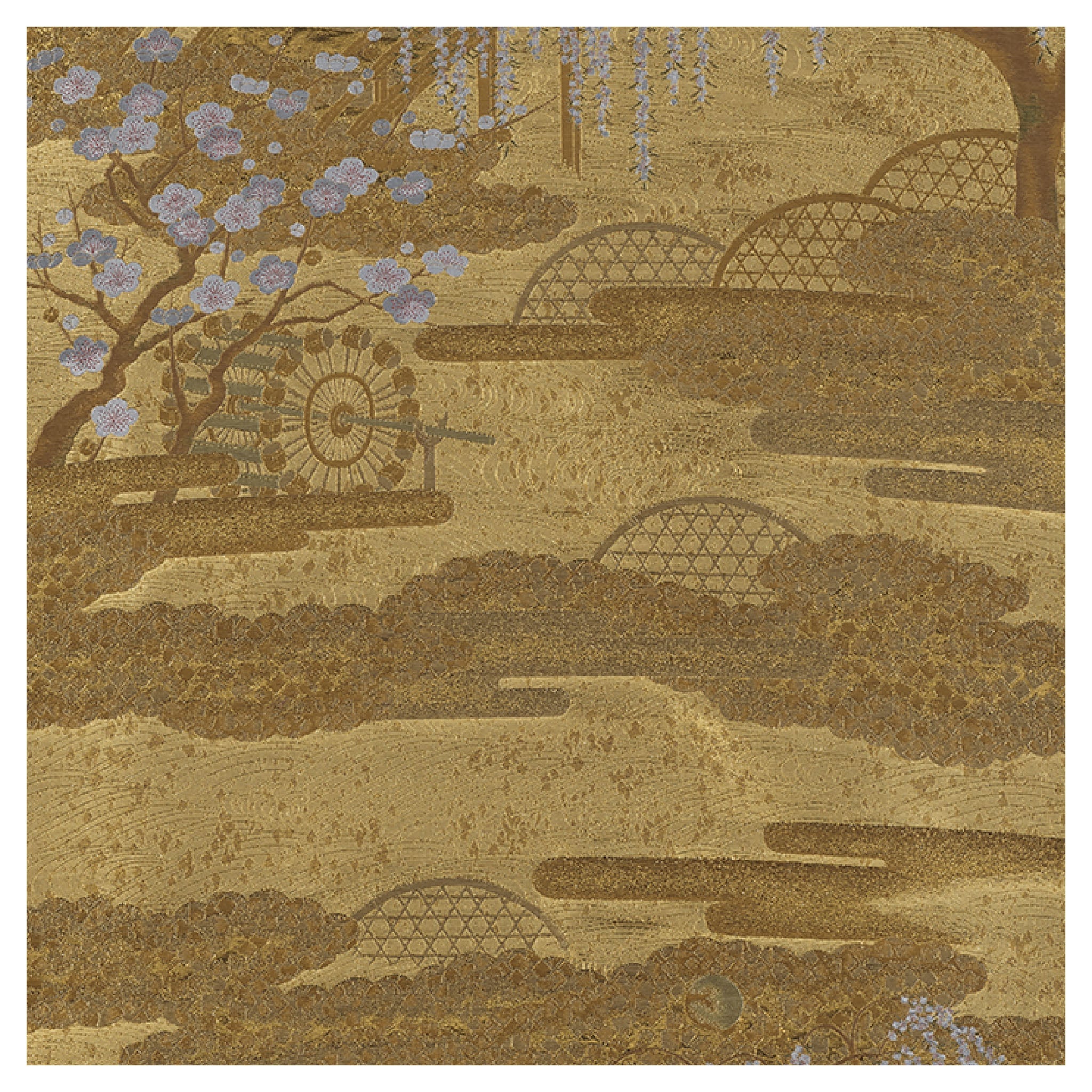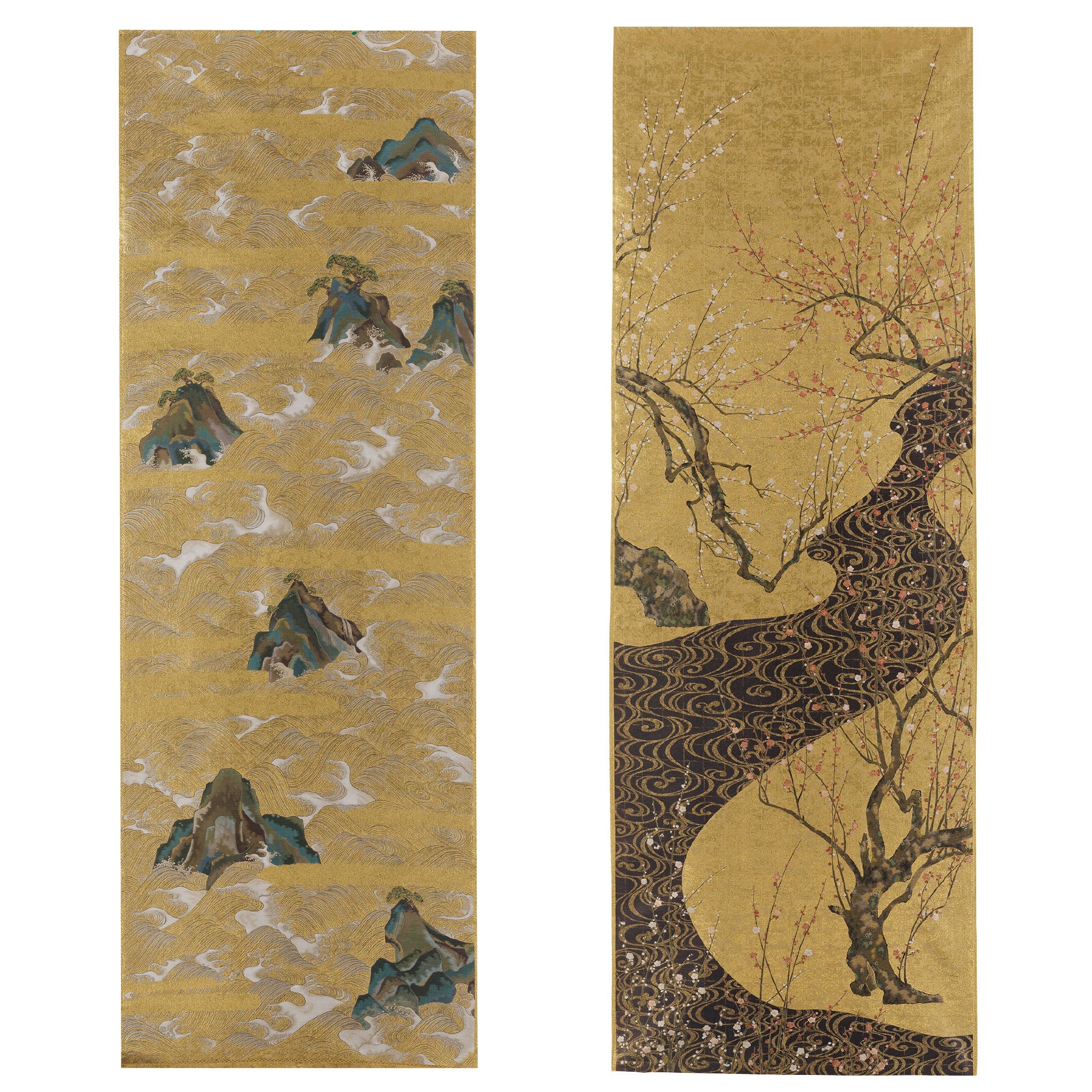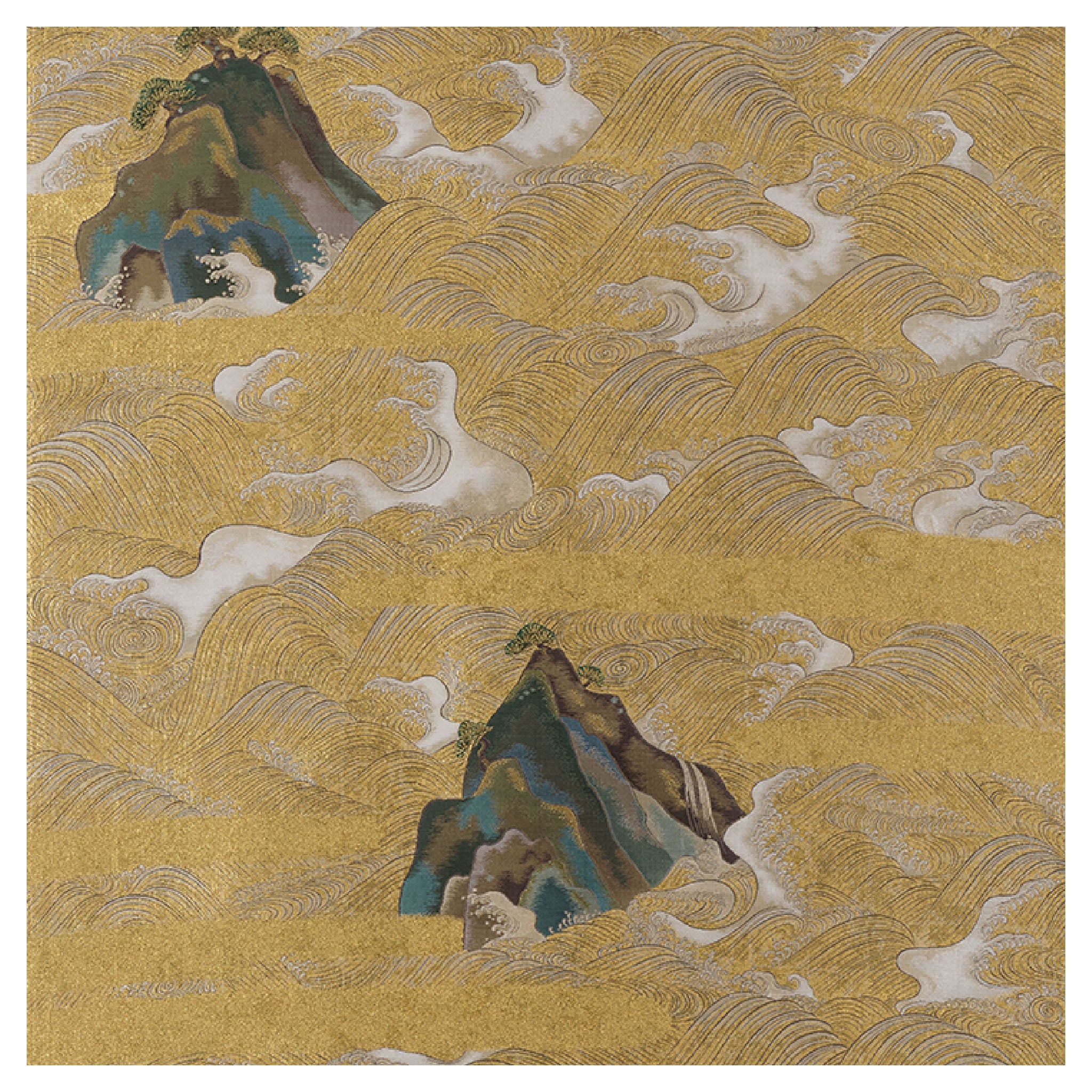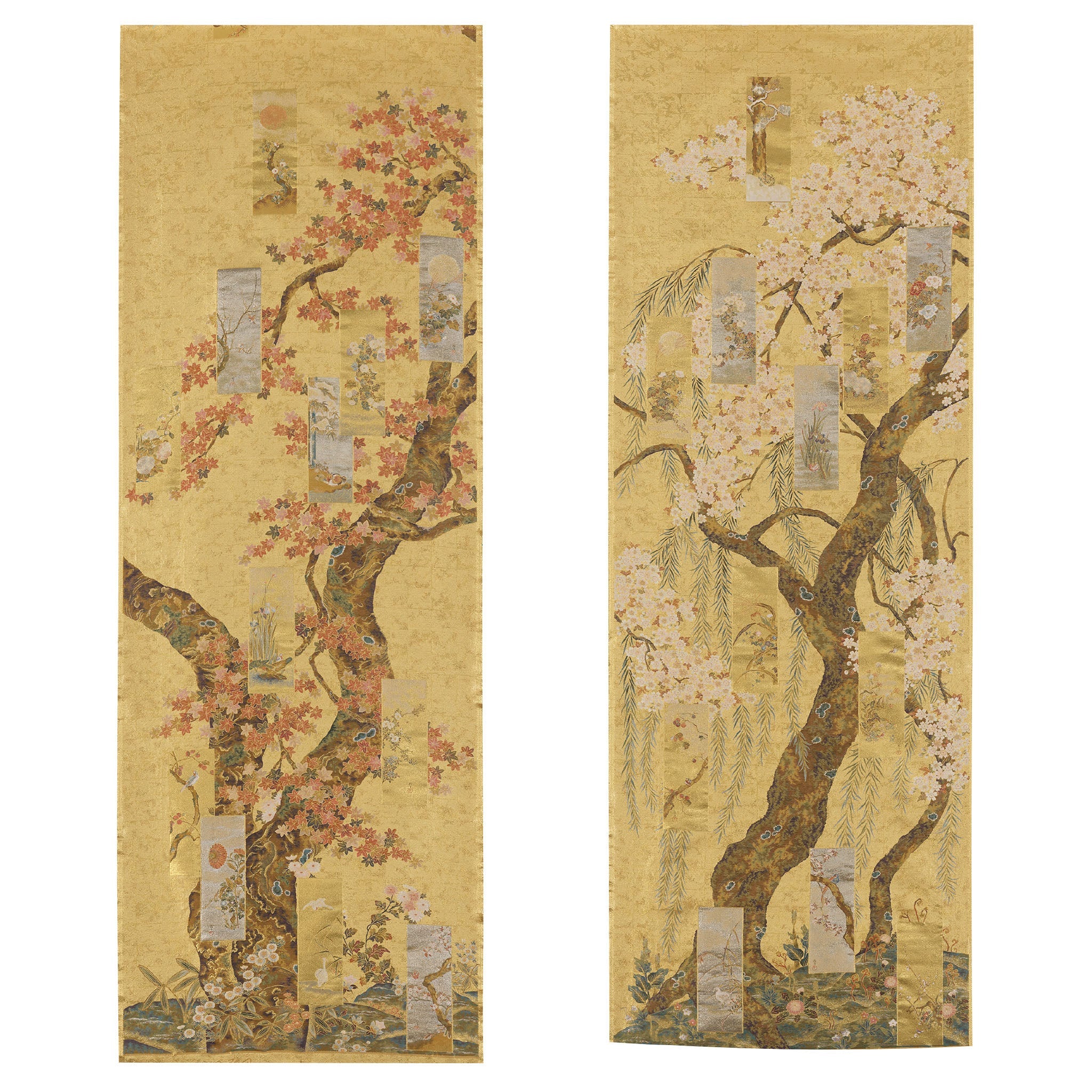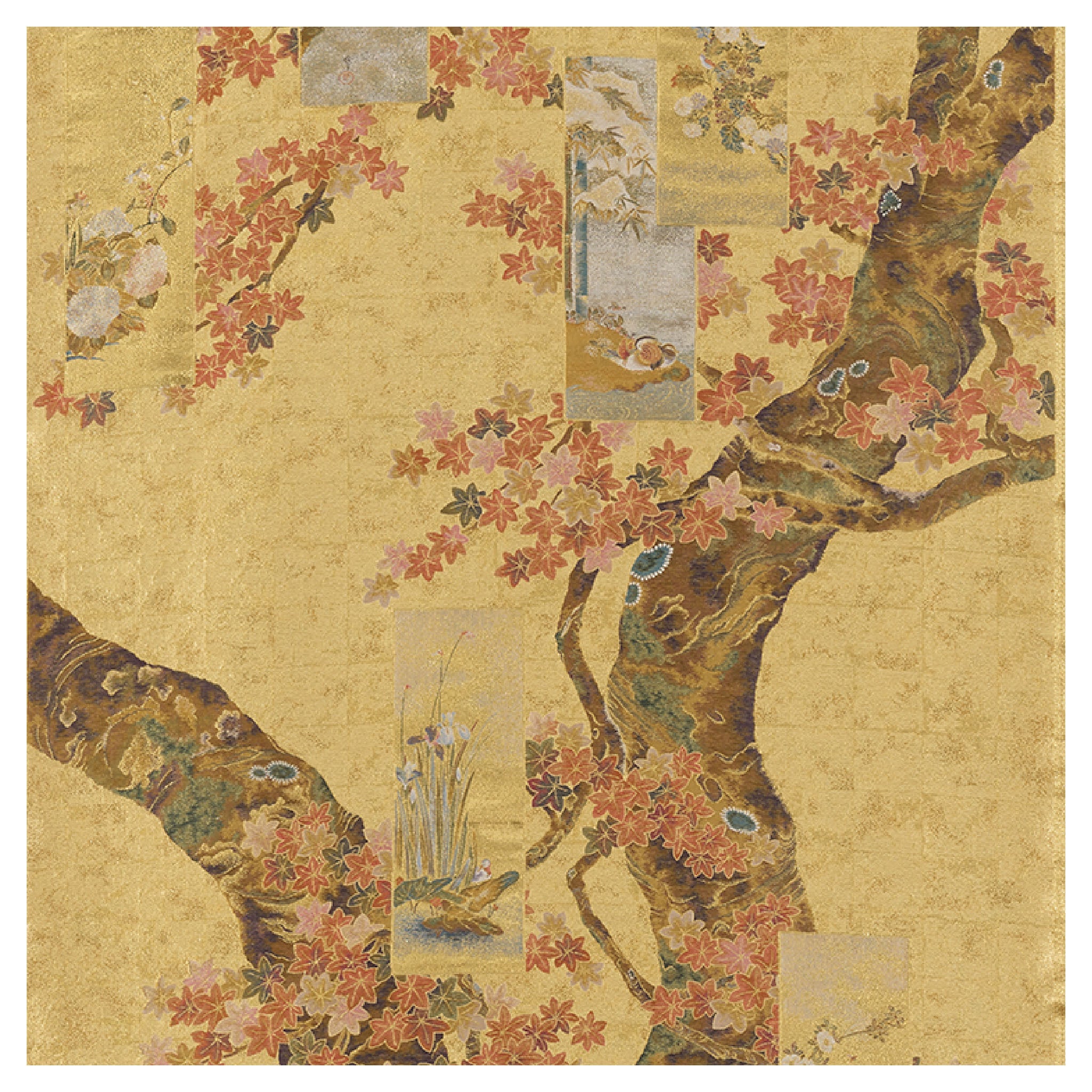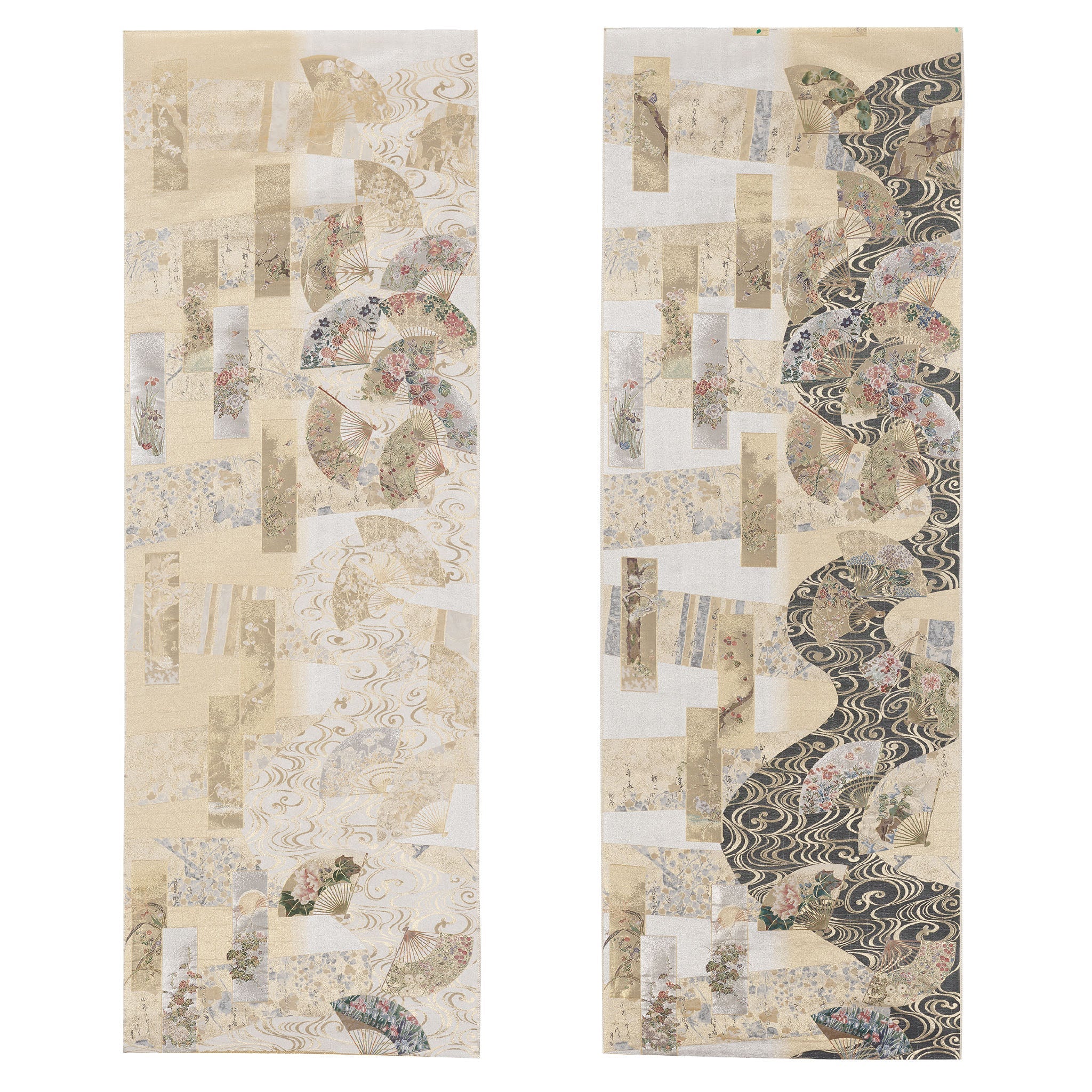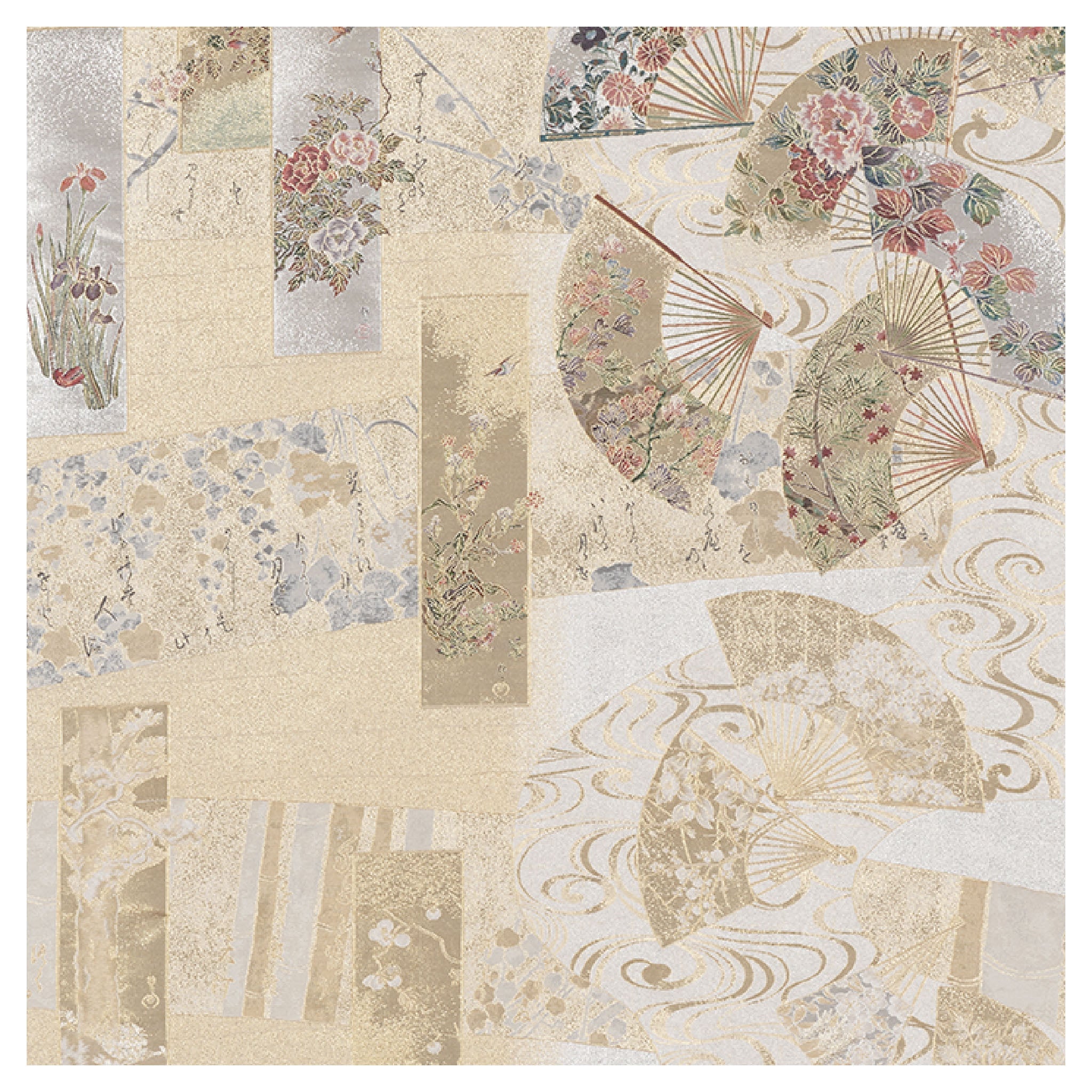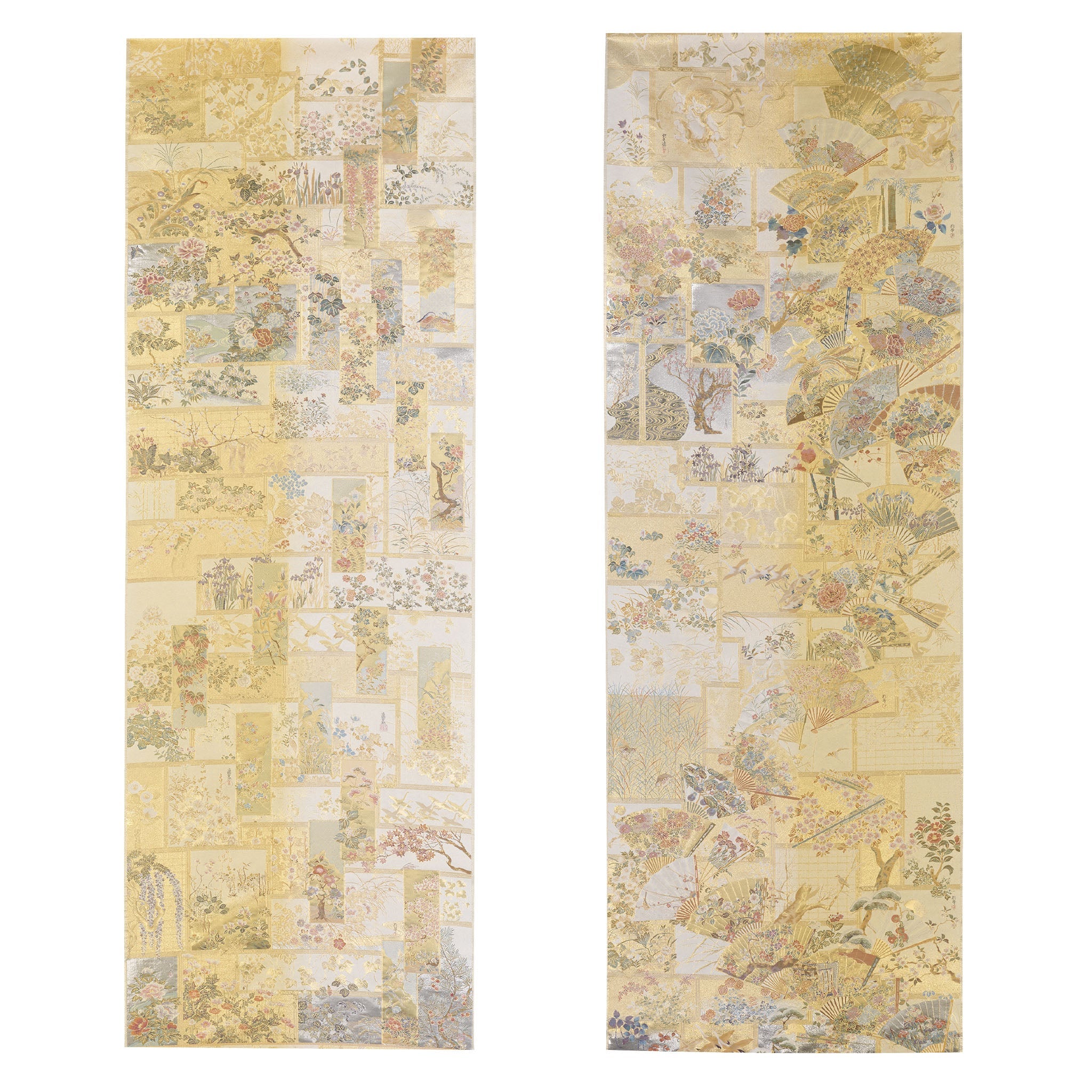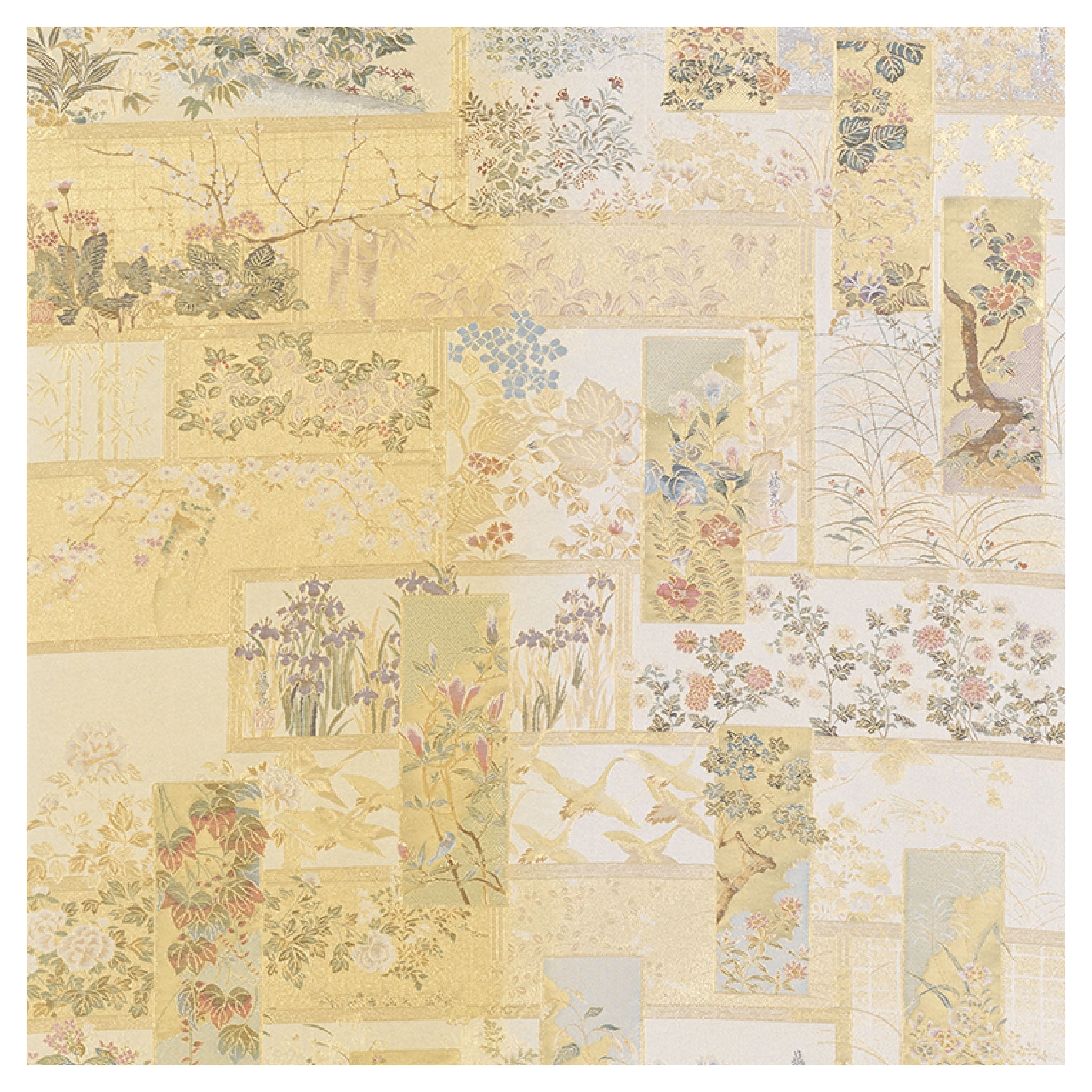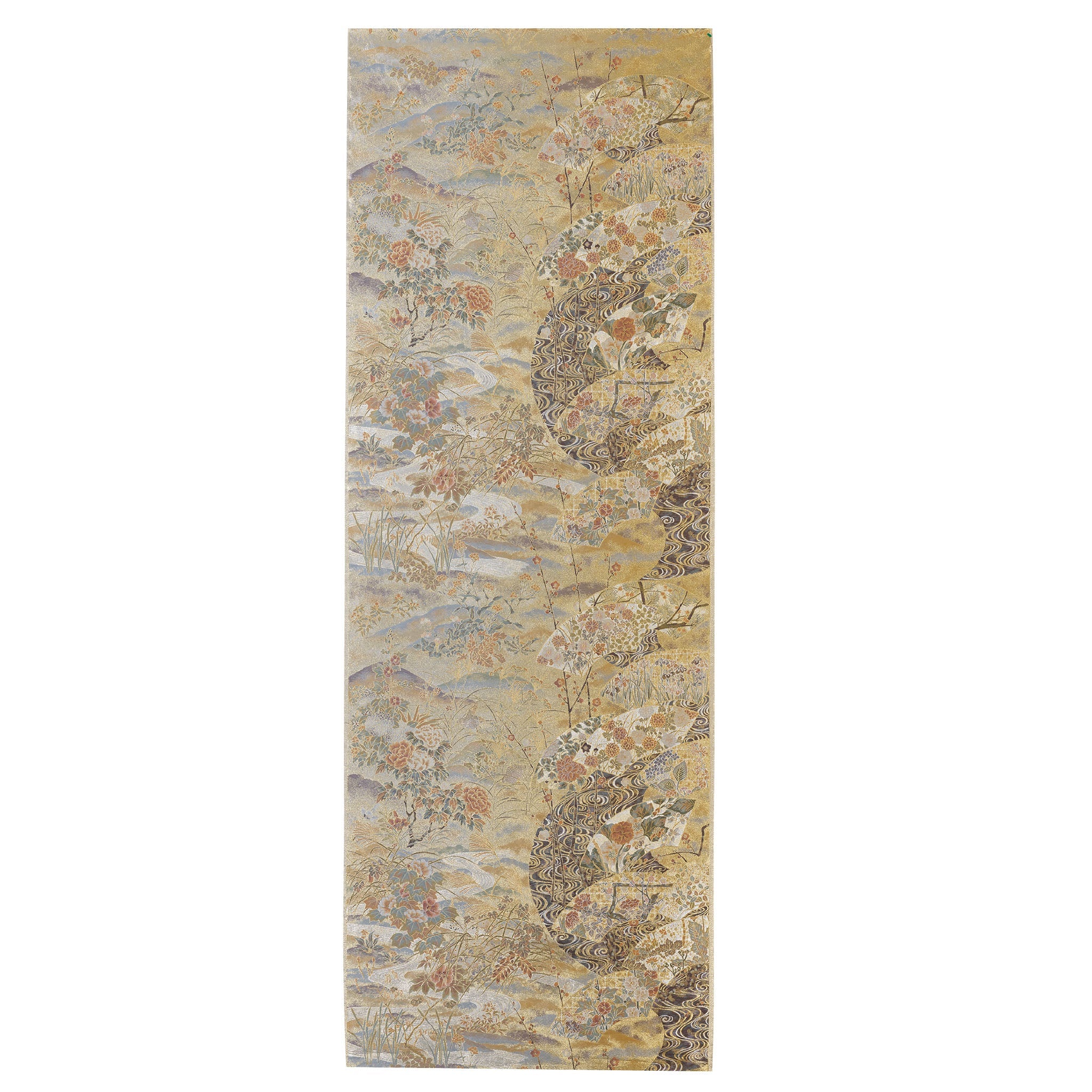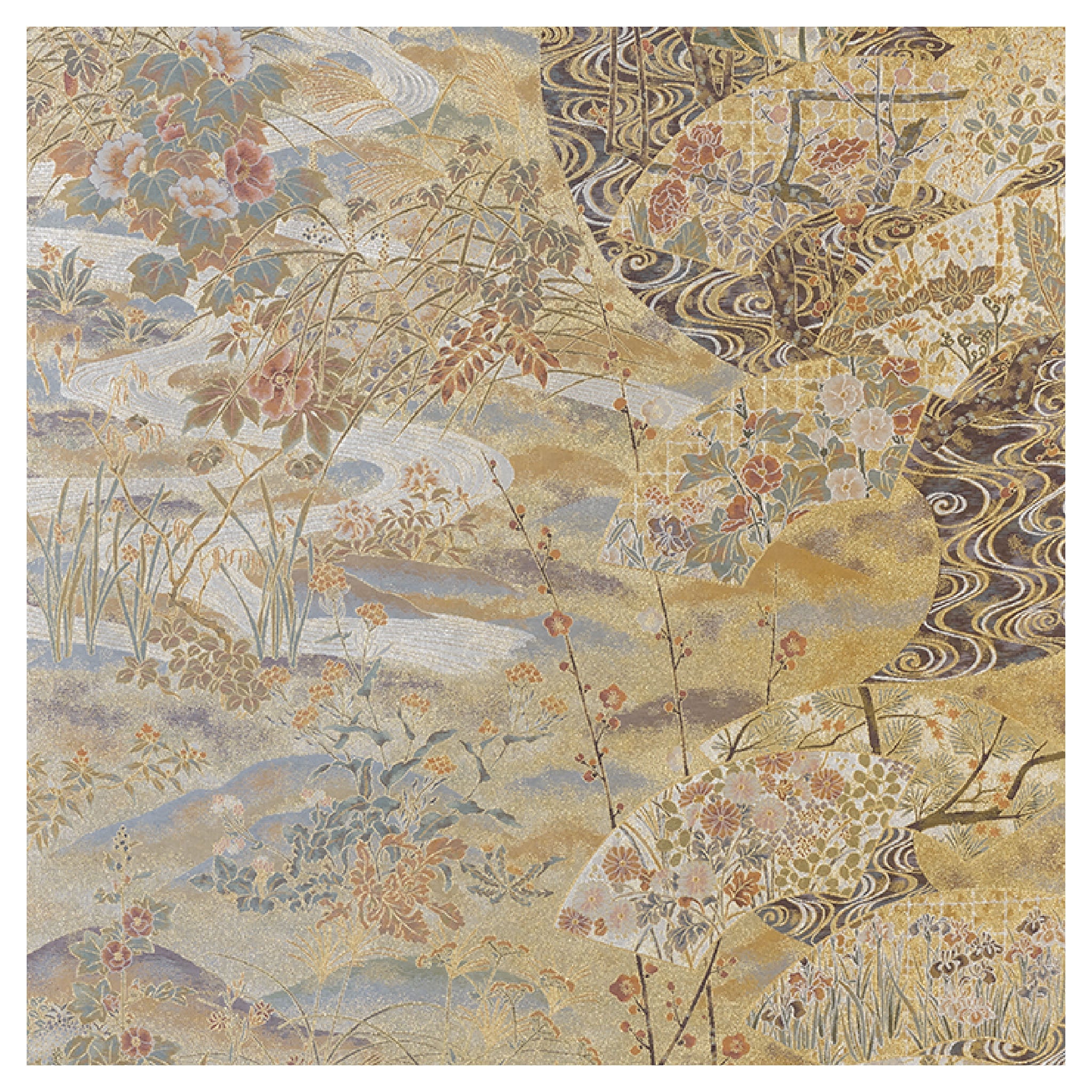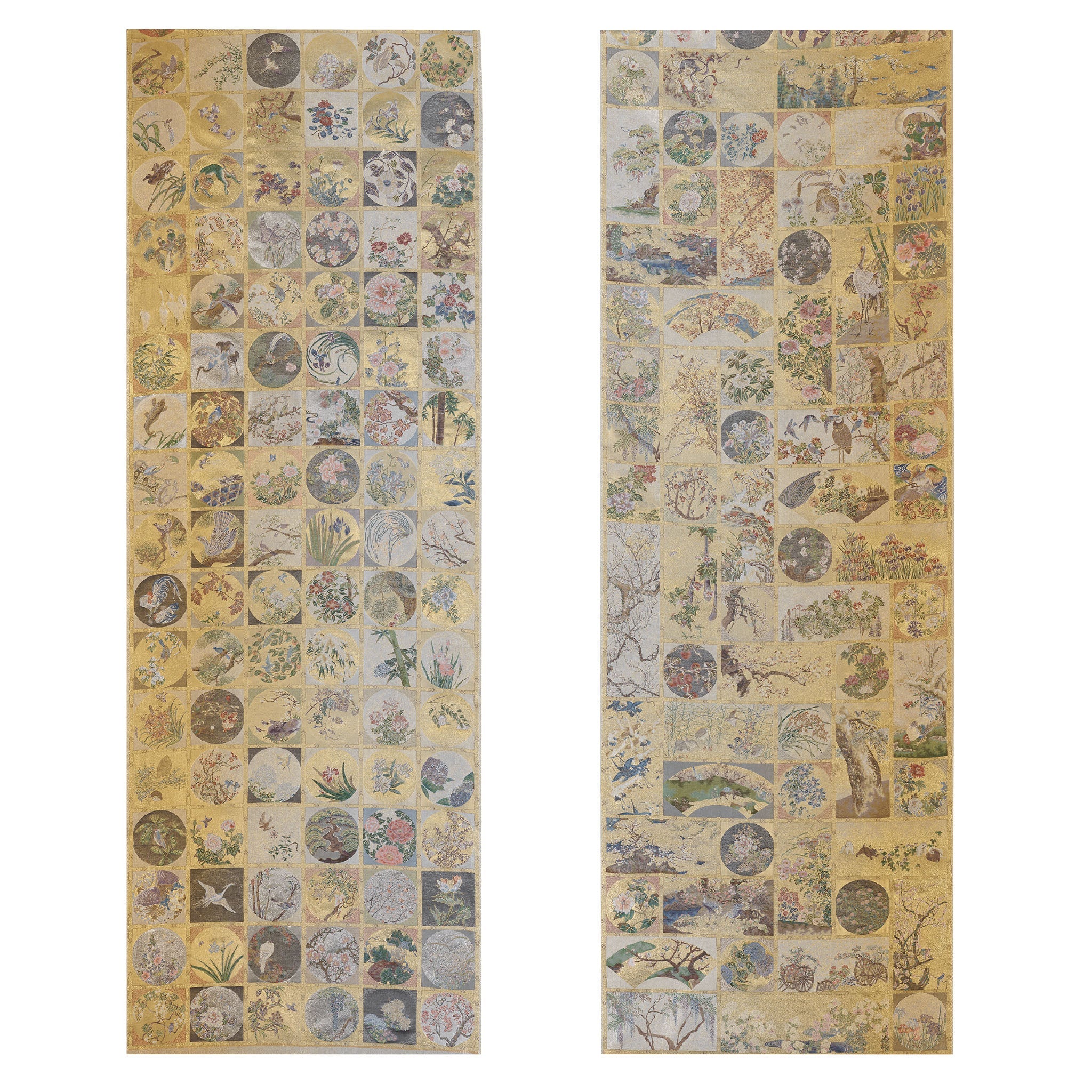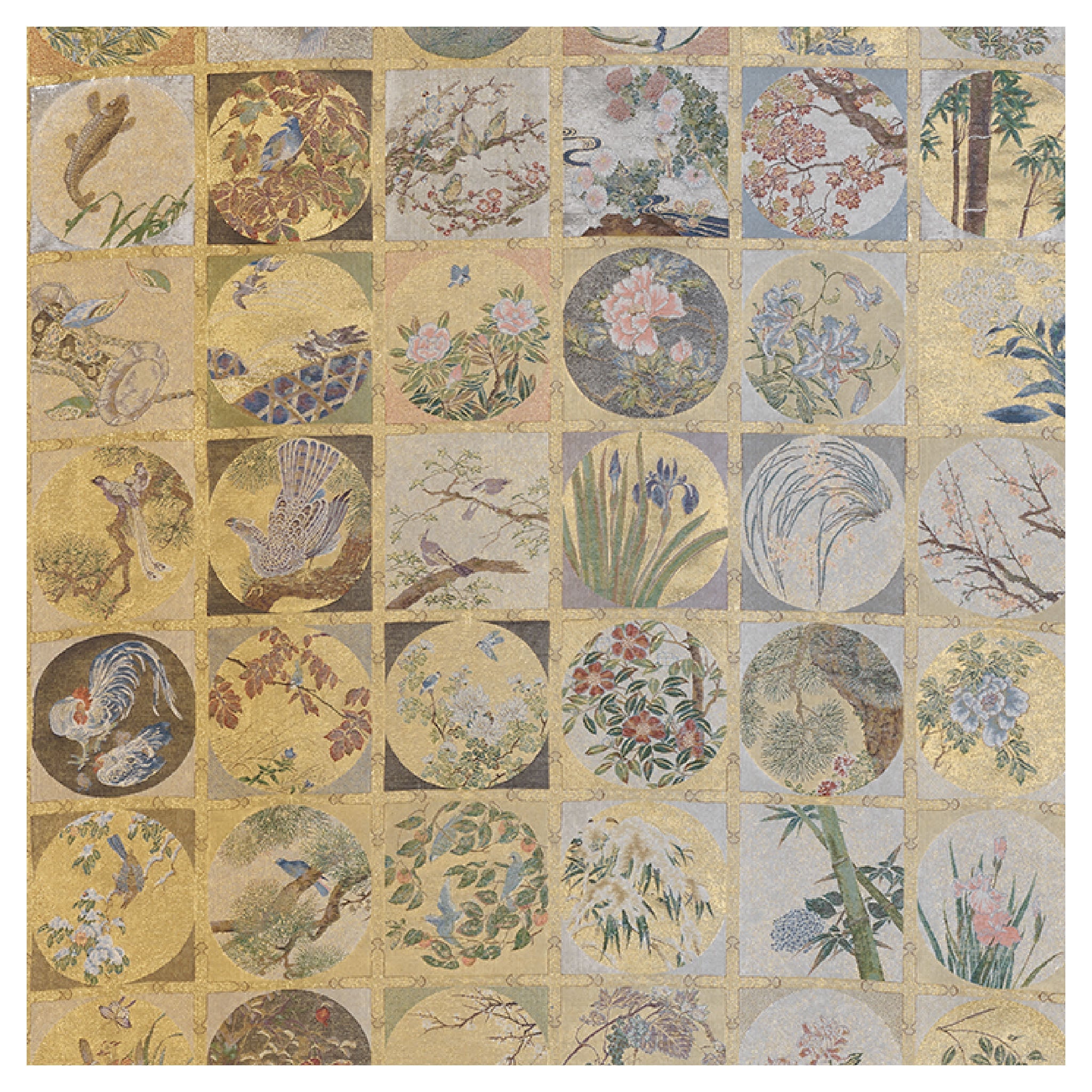Woven beauty beyond time: Nishijin textiles
Textiles have been woven in Kyoto's Nishijin district for more than a thousand years. These brocaded textiles, the pride of Japan, fuse delicate Heian aesthetics with silk weaving techniques dating back to the fifth century. Nishijin textiles occupy a prominent place in the practice of Japanese Buddhism, the Bushido of the samurai class, and Japan’s vibrant town culture. As their designs evolve with the times, their special allure continues to convey reverence for nature and the soul of the master weaver. But today, this cultural heritage faces extinction due to a lack of successors to maintain the tradition.
To sustain this precious cultural legacy into the future, we are breathing new life into Nishijin textiles by reenvisioning them as contemporary art.
西陣織が織りなす時を超える美しさ
古都京都で1000年以上もの歴史を紡いできた西陣織。5世紀に遡る絹織物の技術を基に、平安貴族の繊細な美意識を融合し、日本の誇る伝統工芸へと昇華しました。仏教、武士道、町人文化・・・時代の変遷と共に西陣織は進化を続け、自然への畏敬の念と匠の魂を込めて、唯一無二の美を創造してきました。しかし、現代においては後継者不足という課題に直面しています。
私たちは、この貴重な文化遺産を未来へ繋ぐため、西陣織を現代アートとして再解釈し、新たな息吹を吹き込みます。
Nishijin Textile Art



